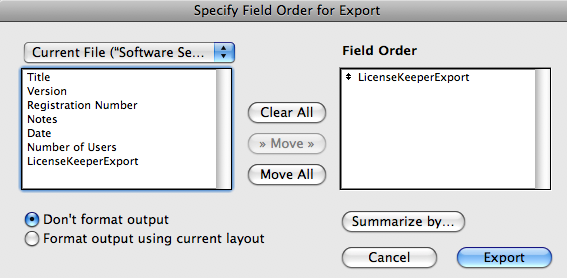

- #TEXTWRANGLER REPLACE WITH NEW LINE HOW TO#
- #TEXTWRANGLER REPLACE WITH NEW LINE SOFTWARE#
- #TEXTWRANGLER REPLACE WITH NEW LINE DOWNLOAD#

Now we need to add the criteria necessary to turn these base URLs into direct links to images. Just to a regular find and replace, DO NOT check the “grep” box:īefore the slash find and replace. You will notice (I hope!) that there are forward slashes (\) before every backslash/regular slash (/) in the URLs.* regular expression to remove anything that is not http…jp2. I had to do two runs to get everything, first the stuff before the URLs, then the stuff after: Before first find and replace. You now need to do some finding and replacing, using “grep” (again!) and the. First, go to TextWrangler’s File menu and select “Export as Text”: Now we want to export these results as text, and then remove anything in the file that isn’t a URL.Your results will appear in a new window, and will look something like this: Your Find window should look like this (again, don’t forget to check “grep”). We’ll use the “grep” function again, and a little regular expression that will match everything between the beginning of the URL and the end(. Now we’re going to search this file to find everything that starts with “http” and ends with “jp2” (what I’m calling the base URLs).Your manifest will now look something like this: Your find and replace box will look like this (don’t forget to check the “grep” box at the bottom!): Find and replace. Do this using the “grep” option, using “\r” to add the return. The easiest way to do this is to find and replace all commas with a comma followed by a hard return. You need to get all the URLs on separate lines. When it opens, it will appear as a single long string: Open the manifest you just downloaded in TextWrangler.

IIIF manifest is on the bottom of the list
#TEXTWRANGLER REPLACE WITH NEW LINE DOWNLOAD#
Once you’ve found one, download the IIIF manifest (click the “Bibliographic Information” button on the far left, which opens a menu, then click on the IIIF manifest link) Search the Vatican Digital Library for the manuscript you want.Next, we need to pull all the base URLs out of the Vatican manifest.
#TEXTWRANGLER REPLACE WITH NEW LINE SOFTWARE#
Why this is important will become clear momentarily.įirst, make sure you have all the software you’ll need: Firefox, Down Them All, and TextWrangler. In addition to Down Them All I like to use a combination of TextWrangler and a website called Multilinkr, which takes text URLs and turns them into hot links. What can you do in that case? In that case, what you need to do it build a list of urls pointing to images, then you can use Down Them All (or other tools) to download them. The URLs in manifests don’t link directly to images you need to add criteria at the end of the URLs to hit the images. The manifests published by the Vatican Digital Library are a good example of this.
#TEXTWRANGLER REPLACE WITH NEW LINE HOW TO#
Frustrating! How do I make it so the newline will come after the 79th character and not as a substitute?Ĭode : 123456789012345678901234567890.Last week I posted on how to use a Firefox plugin called Down them All to download all the files from an e-codices IIIF manifest (there’s also a tutorial video on YouTube, one of a small but growing collection that will soon include a video outlining the process described here), but not all manifests include direct links to images. Any which way I try to recall the 79th character in the replacement string and add to it, I get this crazy blank line effect on my file. Ive searched all through a million forums, mostly suggesting using escaped parentheses to remember a pattern and then \1 to recall it with the newline after that. However when I put an ampersand there, it ruins the ldif file, cutting lines and inserting groups of blank lines. From what Ive been reading, I can add an ampersand before the newline escape in the sed replacement pattern. I just realized this script is substituting the 79th character with the newline and space. Echo "where is the ldif file located that you would like to parse?"


 0 kommentar(er)
0 kommentar(er)
